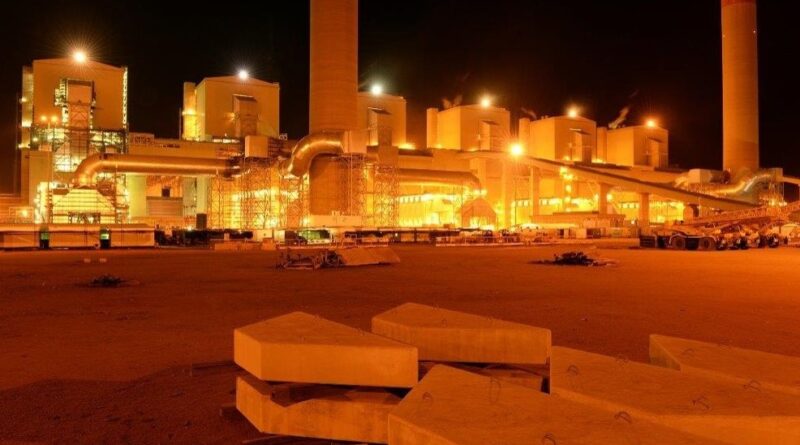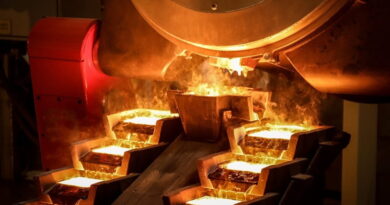Eskom should make way for an independent power grid
Eskom, as a state-owned monopoly, with centrally controlled oversight and direction, is not the best structure for the supply of electricity in South Africa, a critical energy source without which no nation can grow and prosper. Better structures are those that have evolved under competitive circumstances in the European Union, United States, and small, forward-looking countries such as New Zealand.
South Africa will have a robust electric-power supply system only once its electricity generation, transmission, distribution, and control functions, are separated and independently run. The security of short-term and long-term supplies demands that government changes the current faulty structure. World experience reveals that that the best operating electricity supply systems have several characteristics in common, one of which is that customers have a choice of buying from competing electricity retailers. If they are unhappy with the service or the prices charged by one supplier, they can easily and rapidly switch to another.
Consumers switching with ease from one electricity retailer to another tells you more about the system than is at once apparent. The existence of competitive prices means that competing generating plants supply electricity directly to large users or into the wholesale market, from which large electricity users and retailers buy their supplies. Whatever the circumstances, it has become clear that an independently owned and operated high-voltage transmission grid is a necessity.
Independent ownership and management of the grid removes the problem of conflicts of interest, which inescapably exist when there are competing generating companies wishing to gain access to the grid. And competing generating companies are another essential missing element from South Africa’s electricity supply structure. For instance, access to Eskom’s grid is not routinely available to send electricity across the grid to customers who wish to buy their electricity from a private supplier. Not surprisingly, Eskom, given its dominant position as grid owner, demands to be the sole purchaser of electricity, generally at a sub-economic price, which means that no independent power producers have managed to conclude agreements with Eskom to generate the electricity needed to cover the country’s estimated shortage of electricity.
Eskom seems to be of the view that new suppliers should be prepared to provide power at a price equivalent to its own average cost. This is impossible for a newly constructed plant to achieve. For Eskom, any electricity bought at a price lower than the hugely excessive cost of its open-cycle gas turbines is a cost saving. A privately owned electricity company would not stubbornly refuse to conclude cost-saving agreements with outside power producers under such circumstances. Only a state-owned monopoly can afford to indulge in such behaviour.
In the case of renewables, the Department of Energy stepped into broker agreements for the purchase of the electricity the renewables will produce. Unless a monopoly generation and grid-owning company is forced to bow to political pressure, as occurred in the EU, it will not easily agree to allow grid connections for the transmission (wheeling) of competitor electricity across its grid.
The UK’s National Grid is a private company owned by shareholders. It owns the high-voltage grids in England and Wales and claims on its website a high level of transmission reliability. National Grid was created when the electricity industry was privatised. The new company was initially owned by 12 regional electricity companies but was taken over by the private Grid company the now owns it. The company operates the high-voltage transmission system across Great Britain. The transmission system is regulated by Ofgem (Office of Gas and Electricity Markets), which sets prices for transmission charges and other matters relating to the operation of the grid.
Being a private profit-making entity, National Grid welcomes all generating companies that wish to connect to its grid, conditional on new entrants meeting operational standards that will not harm grid reliability. The reason is that more generating companies connected to the grid translates into more income from transmission charges. Eskom’s view of such connections is different. To Eskom, a new transmission customer simultaneously becomes an unwelcome competitor in the sale of electricity.
Removing the South African conflict of interest over the transmission of electricity is a matter of critical importance. If the ownership and control of the high-voltage transmission grid were to be separated from Eskom, but continued to remain in government hands, there would be a proliferation of electricity generators queuing to gain access. Openness would naturally increase even more if, as occurred in the UK, it was to be sold to a private company. The new owner would be even more active in canvassing increased generation business. Tapping currently or readily accessible electricity supplies from electricity generators, such as mines and sugar producers, which have the capacity to generate more power than they need for their own use, would access a considerable amount of added electricity.
The Independent System and Market Operator (Ismo) Bill, which was withdrawn from Parliament prior to the end of the last session, originally intended to create a new government entity that owned and managed the grid, was changed to exclude the transfer of the transmission grid and all other related assets. It did, however, support the transfer of staff to manage the grid.
A great deal of speculation occurred as to whether the Ismo would have functional ownership of the assets it was expected to manage. Would Eskom co-operate in connecting independent power producers from which Ismo wished to buy electricity? Who would set connection and transmission charges for independent generation plants? Who would make up the electricity shortfall if an independent generating plant went down? How would the independents contribute to the balancing of loads? Was Eskom’s claim valid that a transfer of the grid assets would seriously affect its balance sheet and so its credit worthiness?
Many of these questions went unanswered, probably because there were no good answers. Managing a grid owned by a vertical monopoly presented too many problems. One question that appeared to have a simple answer was that relating to Eskom’s balance sheet after the transfer of the grid assets. Would the transfer of the grid have a detrimental effect on the credit worthiness of Eskom? The simple answer is that Ismo would have owed Eskom for all the assets taken over and, as Ismo was government-owned, the debt was as secure as if it was owed to Eskom by the government, with no credit implications.
The government could resolve some of its financial problems if it were to allow Eskom to sell the grid to an experienced international grid-management company and use the proceeds to pay debts. This would take pressure off Eskom and the government and open the electricity industry for much-needed transformation, without which electricity security will remain elusive. An independent high-voltage transmission grid is an essential part of a competitive electricity market in which consumers have a choice of suppliers.




